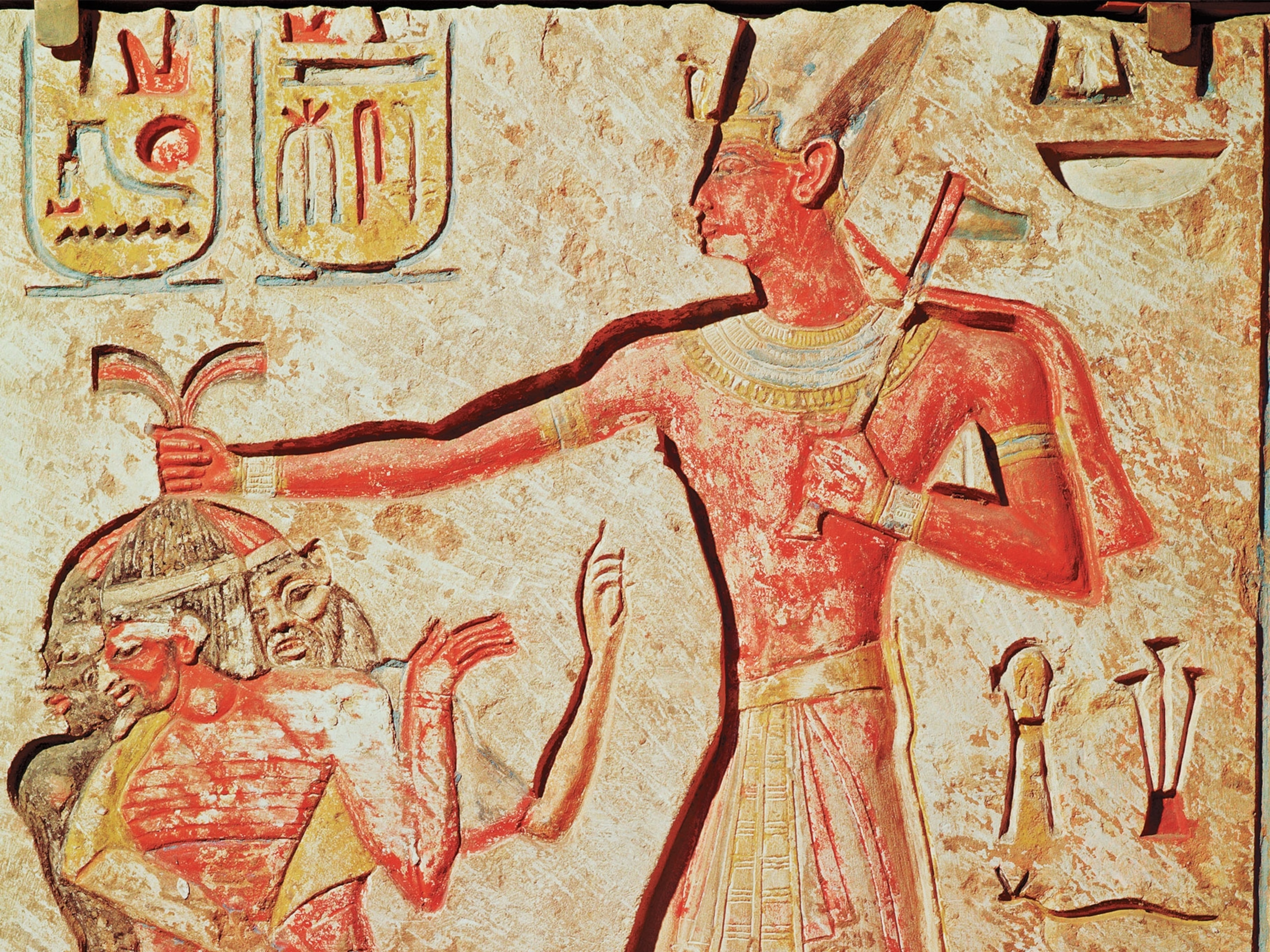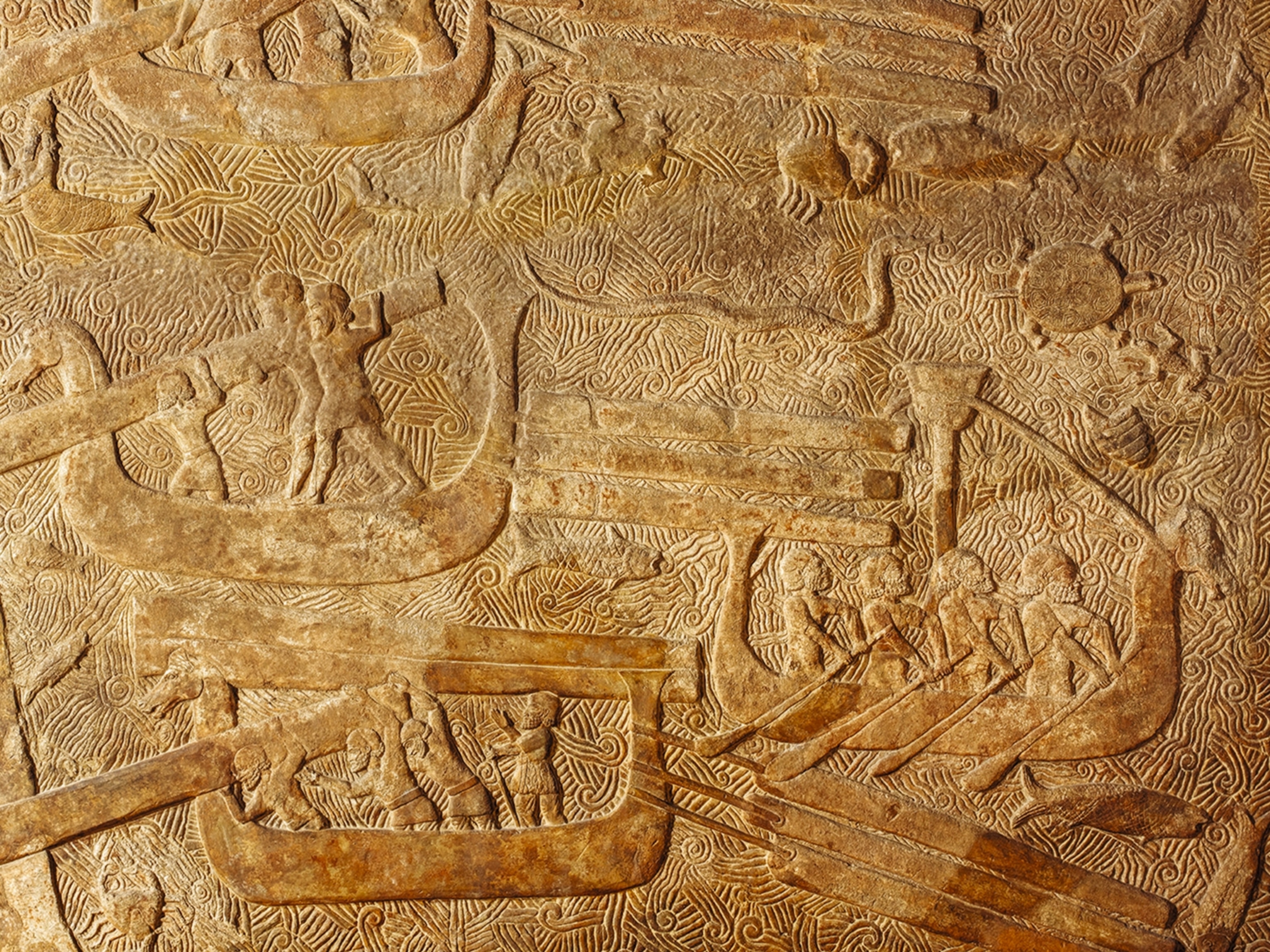The Amorite ruler Hammurabi (unknown–1750 B.C.), crowned king of Babylon around 1792 B.C., was both an avid warrior and a shrewd administrator who honored the traditions of Sumer, Akkad, and other lands he brought under his authority. He could be merciless to enemies, destroying cities that defied him. But he also provided unity and stability to his empire by compiling a code of laws, or legal precedents, that applied to all of his subjects.
Inscribed in stone on a monument showing Hammurabi being blessed by the sun god Shamash, the code governed domestic disputes as well as crimes committed outside the home. Its purpose, he declared, was to cause justice “to rise like the sun over the people, and to light up the land.”
Hammurabi’s Code was based partly on Sumerian laws but prescribed its own harsher penalties for some offenses, including death or mutilation for crimes by commoners resulting in bodily injury. Like the ancient Israelites, the Amorites may once have applied the principle of “an eye for an eye, and a tooth for a tooth” to those who harmed others.
The code certainly favored people of wealth and rank, who were required only to pay a fine if they injured commoners. The code also favored men over women. Adultery by a husband might go unpunished, but an unfaithful wife would be executed.

Despite such inequities, the laws promulgated by Hammurabi offered some protection to women, commoners, and slaves. For example, wives abused by their husbands could sue for divorce, and all defendants were somewhat shielded from false testimony by a law prescribing the death penalty for witnesses who committed perjury. Setting laws down in writing discouraged judges from ruling arbitrarily and promoted the idea of justice as universal and enduring. Hammurabi’s Code did not allow for personal acts of vengeance; that alone was a significant contribution to law and order in civil society.
Hammurabi and other ancient conquerors weren’t above seeking vengeance themselves. There were no rules restraining kings or emperors from attacking one another, even when they had formed alliances and pledged eternal friendship. For instance, Hammurabi turned against his long-time ally the king of Mari, the ruler of a flourishing city on the upper Euphrates River. Hammurabi destroyed his rival’s palace—along with a temple to Shamash. In so doing, he ignored an inscription that cursed anyone who desecrated the shrine and entreated the gods to cut the offender’s throat and annihilate his offspring.
In strife-torn Mesopotamia, such curses were often fulfilled. Hammurabi’s dynasty lasted only a few generations before it toppled. But his code of laws set a vital and enduring precedent. Rulers down through Napoleon Bonaparte issued their own codes to unite realms that contained people of many different customs and conceptions of justice—and to discourage them from taking the law into their own hands.





